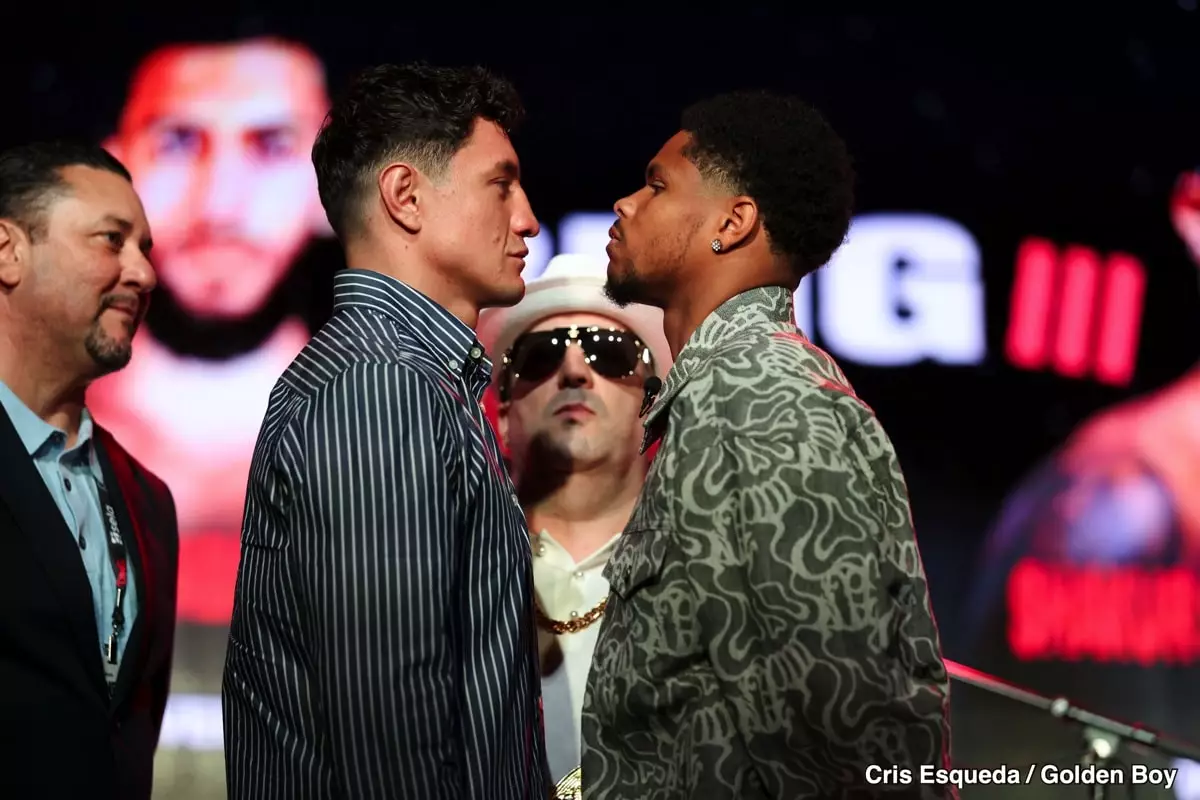Boxing purists and critics alike recognize that ring size is more than just a physical envelope—it shapes the very essence of fight strategy. In the upcoming showdown at Louis Armstrong Stadium, the 18-foot ring becomes the battleground where finesse must meet adaptability. While some commentators dismiss the significance, the dimensions inherently influence fighters’ tactics, tempo, and stamina. Smaller rings are traditionally associated with more aggressive exchanges and less room for movement, which can either level the playing field or expose weaknesses.
For a fighter like Shakur Stevenson, known for his slick boxing style, a confined space could pose a double-edged sword. On one hand, it might hinder his ability to evade aggressive opponents, forcing him into tighter exchanges. On the other, it provides opportunities to corner adversaries, cut off their escape routes, and deliver precise counterattacks. The question is whether Stevenson’s style, which relies heavily on movement and jabbing, can adapt efficiently without his usual spatial freedom.
Timing, footwork, and ring IQ will be decisive. Underestimating the influence of the smaller ring could be a fatal flaw for Stevenson. His ability to control the action hinges on a calculated balance between elusive movement and strategic engagement. The ring size isn’t just a trivial detail; it’s a factor that could dictate the entire narrative of this critical bout.
Shakur Stevenson: The Fight Style and the Challenge of Audience Expectations
Shakur Stevenson’s career has been defined by finesse, quick reflexes, and tactical mastery. Yet, his style often draws criticism for its paucity of fireworks. Fans and critics in New York, a city with a rich boxing history and a passion for action, demand more than just points and evasions—they crave excitement, engagement, and drama. Stevenson’s tendency to employ hit-and-run tactics may work against inferior opponents, but against a relentless pressure fighter like William Zepeda, it could be a perilous approach.
The promotional landscape and negotiations reportedly steer Stevenson toward fights that safeguard his undefeated record and build toward a mega-fight with Gervonta Davis. Consequently, recent matchups have favored safer, less challenging opponents—fighters like Padley and Artem Harutyunyan—who do little to test his mettle. This strategic maneuvering is understandable financially but risks alienating core fans who yearn for the kind of thrilling contests that elevate a fighter’s legacy.
In this context, Stevenson faces a pivotal moment. Will he cage himself behind a cautious, defensive style, or will he summon the aggressive spirit needed to satisfy his audience? His reputation isn’t solely built on technical prowess; it’s about the storytelling in the ring. A fighter who refuses to meet fire with fire in front of a demanding crowd risks the wrath of fans who want to see genuine grit, not just calculated points.
The Physical and Tactical Challenges Facing Stevenson
Beyond strategic considerations, Stevenson’s physical resilience remains an Achilles’ heel. His brittle hands have already demonstrated their frailty in recent fights, limiting his offensive output and forcing him into a predominantly countering role. Against a puncher like Zepeda, this vulnerability could be exploited. Zepeda’s aggressive style and power punches threaten to break through Stevenson’s defenses if he isn’t careful.
Bradley’s comments reflect a legitimate concern: Stevenson’s hand issues might force him into a more conservative, less engaging style—possibly even leaning on holding or clinching to neutralize threats. Such tactics risk further displeasing fans who expect action from a marquee event hosted in the boxing-rich environment of Queens. The local audience’s appetite for explosive, high-stakes fights will test Stevenson’s willingness to confront danger head-on or retreat into safe but boring boxing.
The tactical compulsion is clear: Stevenson must find ways to extend his hand power or develop alternative offensive strategies that minimize reliance on punch strength. Precision, quick counters, and smart footwork are critical. Otherwise, his resistance to engagement may reduce him to a defensive spectacle, losing the fight in the eyes of spectators.
The Broader Implications: Maneuvering for the Gervonta Fight and the Cost of Caution
Stevenson’s fight selection alludes to a broader strategic calculus. The fighters he’s faced recently have been carefully chosen to keep him unbeaten while avoiding high-level risk. Matchmakers seem intent on preserving his marketability for a future blockbuster showdown with Gervonta Davis. This cautious approach makes sense commercially but risks stunting Stevenson’s reputation as a true, tested champion.
Fans are increasingly scrutinizing his reluctance to face stiff competition, often accusing him of boxing purely for style points rather than substance. The fight against Zepeda is more than just an elimination bout; it’s a litmus test for how much Stevenson is willing to fight in the spirit of true competition—especially under demands for action in a venue like New York City.
If Stevenson opts for cautious tactics, boxing fans may soon turn their back, viewing his style as more refined than formidable. Conversely, a willingness to stand and trade, even with his hand vulnerabilities, could transform his image into that of a ‘warrior’ embracing the sport’s raw side. The penalty for sidestepping durability and grit could be a loss of fan trust and the erosion of his stature in the sport’s most passionate city.
—
By critically examining the entire narrative of Stevenson’s upcoming bout, it becomes evident that this fight isn’t just about skill and power; it’s about identity, audience perception, and strategic evolution. How Stevenson’s physical limitations, ring tactics, and fight selection align will ultimately define his legacy—not just in the ring, but in the eyes of the boxing world.

